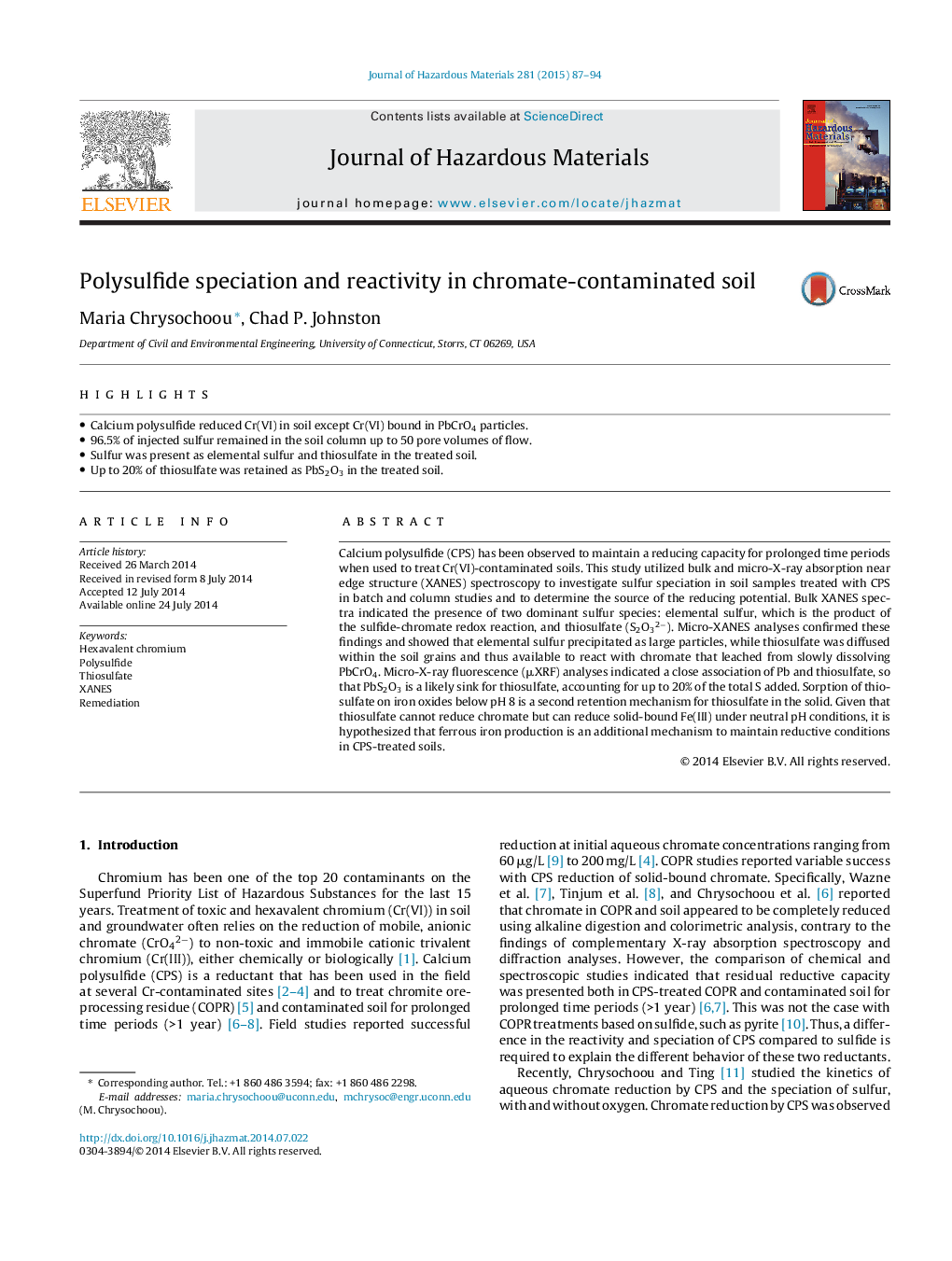| کد مقاله | کد نشریه | سال انتشار | مقاله انگلیسی | نسخه تمام متن |
|---|---|---|---|---|
| 576400 | 1453079 | 2015 | 8 صفحه PDF | دانلود رایگان |
عنوان انگلیسی مقاله ISI
Polysulfide speciation and reactivity in chromate-contaminated soil
ترجمه فارسی عنوان
ویژگی و واکنش پلی سولفید در خاک آلوده به کرومات
دانلود مقاله + سفارش ترجمه
دانلود مقاله ISI انگلیسی
رایگان برای ایرانیان
کلمات کلیدی
موضوعات مرتبط
مهندسی و علوم پایه
مهندسی شیمی
بهداشت و امنیت شیمی
چکیده انگلیسی
Calcium polysulfide (CPS) has been observed to maintain a reducing capacity for prolonged time periods when used to treat Cr(VI)-contaminated soils. This study utilized bulk and micro-X-ray absorption near edge structure (XANES) spectroscopy to investigate sulfur speciation in soil samples treated with CPS in batch and column studies and to determine the source of the reducing potential. Bulk XANES spectra indicated the presence of two dominant sulfur species: elemental sulfur, which is the product of the sulfide-chromate redox reaction, and thiosulfate (S2O32â). Micro-XANES analyses confirmed these findings and showed that elemental sulfur precipitated as large particles, while thiosulfate was diffused within the soil grains and thus available to react with chromate that leached from slowly dissolving PbCrO4. Micro-X-ray fluorescence (μXRF) analyses indicated a close association of Pb and thiosulfate, so that PbS2O3 is a likely sink for thiosulfate, accounting for up to 20% of the total S added. Sorption of thiosulfate on iron oxides below pH 8 is a second retention mechanism for thiosulfate in the solid. Given that thiosulfate cannot reduce chromate but can reduce solid-bound Fe(III) under neutral pH conditions, it is hypothesized that ferrous iron production is an additional mechanism to maintain reductive conditions in CPS-treated soils.
ناشر
Database: Elsevier - ScienceDirect (ساینس دایرکت)
Journal: Journal of Hazardous Materials - Volume 281, 8 January 2015, Pages 87-94
Journal: Journal of Hazardous Materials - Volume 281, 8 January 2015, Pages 87-94
نویسندگان
Maria Chrysochoou, Chad P. Johnston,
